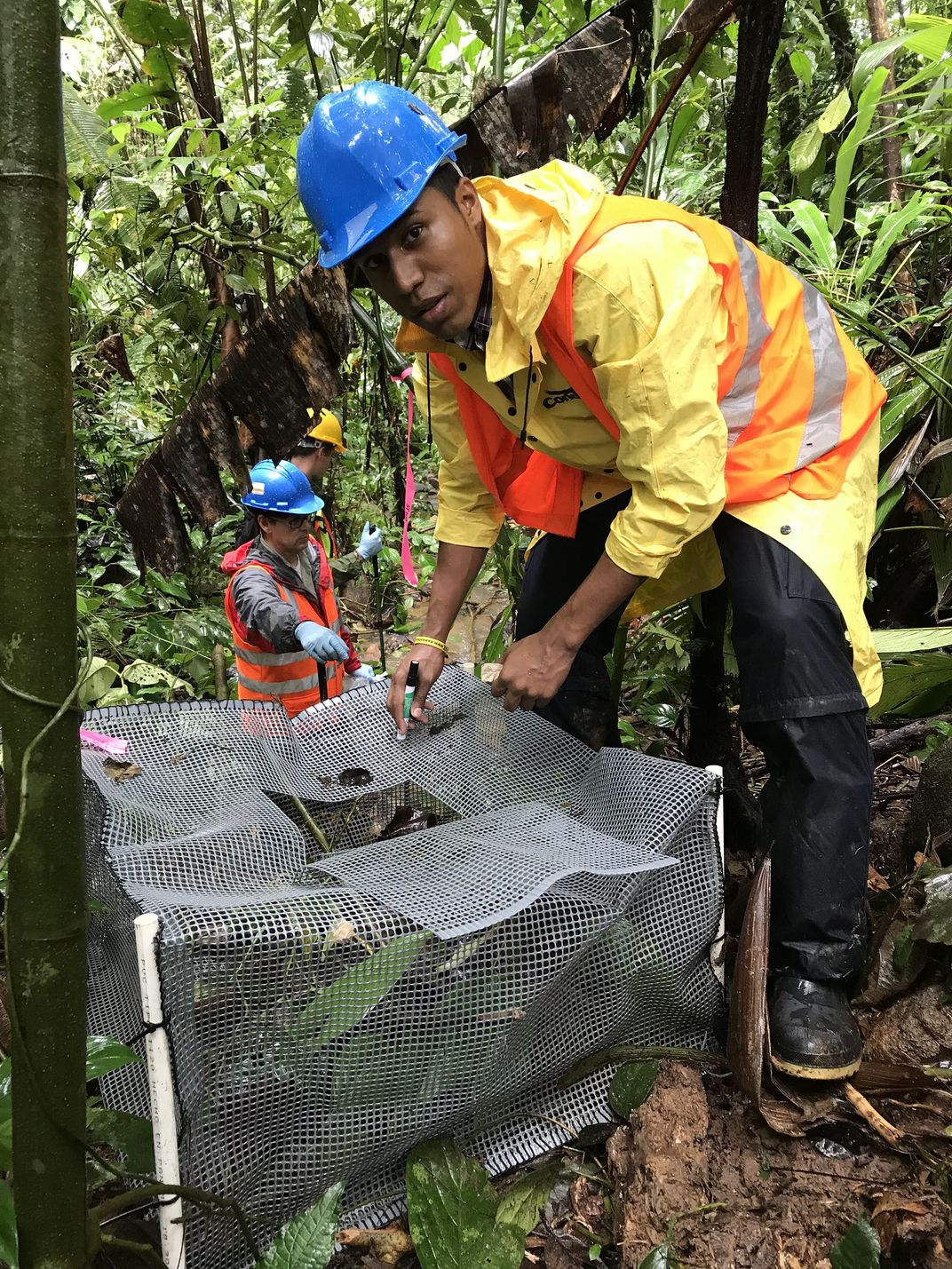NATIONAL ZOO AND CONSERVATION BIOLOGY INSTITUTE
Rain, Rivers and Radiotrackers: Releasing Captive-Bred Harlequin Frogs Into the Wild
A team of scientists ventured deep into the rain-soaked Panamanian forest on a mission to restore wild populations of a critically-endangered amphibian.
:focal(700x350:701x351)/https://tf-cmsv2-smithsonianmag-media.s3.amazonaws.com/filer_public/73/66/73668034-5b0f-4dc6-9cb9-f94bb4b92919/harlequin-release-1400x700.png)
It was like working in a shower. Despite having planned the work for the dry season, the moment we released roughly 400 captive-bred variable harlequin frogs into the wild in January 2018, it rained… and rained, and rained. More than a meter of rain fell on our newly released frogs, a stark contrast to the usual 50–80 milimeters for that time of year. Amidst the downpour, our challenges multiplied: seeking refuge from the relentless rain, these tiny, colourful creatures retreated into the newfound wilderness of Panama’s rainforest, disappearing from the sight of our determined team of biologists trying to monitor their progress.
/https://tf-cmsv2-smithsonianmag-media.s3.amazonaws.com/filer_public/24/1e/241ea696-5bd4-4ff5-840a-578e3402c7d5/harlequin-release-atelopus-1400x700.png)
Prior to release, we attached tiny radiotracking backpacks to several frogs, enabling us to trace their post-release movements. The tracked frogs rapidly dispersed beyond the boundaries of our monitoring area, with females moving the furthest. One of our team members managed to track the signal from a transmitter to a hole in the bank of the stream. But when he got there, all he saw were glowing red eyes reflected back from his headlamp. It seemed our unfortunate harlequin frog had probably been devoured by a smoky jungle frog, one of the largest and most formidable frogs in Panama.
/https://tf-cmsv2-smithsonianmag-media.s3.amazonaws.com/filer_public/c1/91/c1915c85-f763-48c7-8ac6-d3a1dc10e869/harlequin-release-forest-1400x700.png)
There is no shortage of debate regarding whether or not it is wise to reintroduce susceptible frogs to an environment still threatened by the original disease. Nevertheless, observation is always the first key step in scientific research, and our careful and systematic observations have provided vital insights into the myriad challenges these animals face as they transition from captivity to the wild.
Predation is one such challenge; the smoky jungle frog quickly taught us this lesson. In captive-bred frogs, the risk of predation is heightened by diet: frogs reared in captivity, nourished on fruit flies and crickets (as opposed to ants, mites and other leaflitter invertebrates) may lose their natural skin toxins—leaving them more vulnerable to predators once released.
We studied a group of frogs in small outdoor enclosures constructed from plastic mesh, called mesocosms, for approximately 3 months. Our goal was to investigate whether and how these frogs regained their protective skin defences once they were placed back in their natural habitat. Although the number of toxin-secreting bacteria on the frogs’ skin increased in these wild conditions over time, it was insufficient to fully restore their natural defences. Working out how to restore the frogs’ natural skin defences prior to release is therefore now a key priority on our research agenda.

In the end, despite returning to our release site every month for six months, we did not see any of our released frogs beyond the third month. Although this may sound disheartening, our results are the product of an extraordinary investment of effort and commitment and have provided important lessons.
The insights we have gained from this release trial will enable us to refine our methods and guide our future research within an adaptive management framework. The mission to restore wild populations of these remarkable creatures will require endless determination and dedication, and we are proud to share the lessons we have learned with our colleagues in conservation.
Brian Gratwicke is a conservation biologist at the Smithsonian's National Zoo and Conservation Biology Institute.
The article ‘Release trial of captive-bred variable harlequin frogs Atelopus varius shows that frogs disperse rapidly, are difficult to recapture and do not readily regain skin toxicity’ is available open access in Oryx—The International Journal of Conservation.
